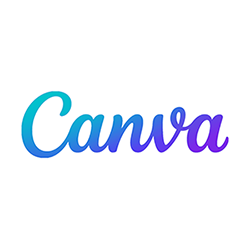Last Updated on February 7, 2024 by Mika
TL;DR: "How to Create Digital Products to Sell Online and Earn Money" guides you through the lucrative world of digital product creation, from eBooks and courses to graphics and software. It highlights the benefits of digital products, such as scalability and the potential for passive income, and covers popular product types like templates, music, and photography. The article also explores various selling platforms, from Etsy to your own website, and provides tips on identifying your niche, understanding market demand, and generating product ideas. Whether you're a designer, writer, or developer, this guide offers actionable steps to turn your skills into profitable digital products.
Creating digital products to sell online and earn money can be an exhilarating path to financial freedom. Digital products are items like software, eBooks, video courses, digital planners, templates, music, etc., that exist in a digital format.
But what is the real charm of digital products products? They can be sold countless times through quite much automated sales channels and funnels, without ever depleting your inventory. This makes them an incredibly lucrative and low-barrier entry point for anyone looking to tap into passive income streams.
Overview of Popular Digital Products
From the visually stunning graphics to the rhythmic beats of original music, each product category opens up a new avenue for you to explore and monetize your passion.
So, let’s discover the diverse range of digital products that you can create and sell online.
- Templates: These are pre-designed frameworks, be it for websites, presentations, or social media posts. They offer a quick and customizable solution for users looking to save time and effort.
- Graphics: This category includes digital artwork, illustrations, and infographics. They are in high demand across various sectors, from marketing to content creation.
- Music: Original compositions, beats, or sound effects fall under this category. They are essential for creators in need of unique audio to complement their projects.
- E-Books and Guides: Digital books and comprehensive guides on various subjects are immensely popular. They can range from instructional content, like ‘how-to’ guides, to niche topics like gardening, programming, or personal development.
- Online Courses: With the rise of e-learning, online courses have become a sought-after digital product. They can cover a vast array of topics, from academic subjects to hobbyist pursuits, and offer a structured learning experience.
- Photography: High-quality, unique photographs are in demand for use in web design, marketing materials, and more. Photographers can sell their images as digital products to a wide audience.
- Software and Apps: Custom software solutions, mobile apps, and tools designed to solve specific problems or provide entertainment are highly lucrative digital products.
- Video Content: This includes instructional videos, documentaries, or even entertainment content.
- Web Elements: This category includes website themes, plugins, and other web-related tools and elements that help in website development and enhancement.
- Printables: From planners and calendars to party decorations and craft templates, printables are easy-to-create digital products that customers can download and print at home.
- Podcasts: Audio content, especially in the form of podcasts, has seen a surge in popularity. Creators can produce episodic series on various topics and either sell access or offer free listening supported by ads.
- Digital Magazines and Journals: These offer a digital twist on traditional print media, covering a wide range of interests and niches.
Selling Platforms

Below are some of the most popular online platforms where creativity meets commerce. Each platform, from the artisanal charm of Etsy to the streamlined efficiency of Gumroad, offers unique opportunities and challenges.
Understanding these platforms is key to finding the right fit for your digital products. Some marketplaces specialize in specific types of products, and others are more general. However, it’s important to pick the right marketplace for your product where your audience is. Of course, you can also sell the product on multiple marketplaces at the same time to expand your reach.
Let’s delve into the world of digital selling platforms, where your creations can find a home and your entrepreneurial dreams can take flight.
- Etsy: Known for its creative community, Etsy is ideal for selling unique and artistic digital products. It’s a platform where individuality and creativity thrive.
- Gumroad: With its straightforward interface, Gumroad is perfect for creators who seek a simple and direct way to sell their digital products.
- Shopify: For those who want more control, Shopify offers a customizable storefront to sell digital products. It’s great for building a brand and scaling your business.
- Creative Market: A haven for graphic designers and artists, Creative Market is the go-to platform for selling graphics, templates, and other design-centric digital products.
- Your Own Website/Blog: Utilizing your own website or blog to sell digital products offers unparalleled control and customization. This route allows you to build and nurture your brand directly with your audience. With various e-commerce tools and plugins available, such as WooCommerce for WordPress sites, you can easily set up an online store. Integrating payment gateways like PayPal and Stripe simplifies the transaction process. Additionally, having your own platform means you can directly engage with your audience through blog posts, updates, and newsletters, creating a more personalized shopping experience.
- Teachable: Perfect for those who create educational content, Teachable is a platform that allows you to build and sell online courses with ease. It offers various tools to create engaging courses and manage your students.
- Amazon Kindle Direct Publishing (KDP): For digital book authors, Amazon KDP is a prime choice. It allows you to self-publish your eBooks and paperbacks for free, reaching millions of readers on Amazon.
- Big Cartel: Ideal for independent artists and makers, Big Cartel offers a simple platform to sell your digital products directly to your fans and customers.
By choosing the right platform that aligns with your product type and business goals, you can effectively reach your target audience and maximize your sales potential. Whether it’s through a well-established marketplace or your own personalized website, each platform offers unique benefits to help you succeed in the digital product space.
Identifying Your Niche and Product

When you’re ready to create digital products to sell online and make money, the first step is pinpointing your niche. Ask yourself, what are you passionate about? What skills do you possess that others might find valuable?
Maybe you’re a wizard with graphic design, a master of catchy melodies, or a guru in creating easy-to-use templates. Your niche should be at the intersection of your talents and interests. This alignment not only fuels your creativity but also ensures you enjoy the journey of creating your digital products.
Choosing the niche is not rocket science, but it is a very important choice you need to make before you even start! In addition to your interest and skills, there are certain things to consider such as market size, monetization scalability, etc., I encourage you to read my step-by-step guide on how to choose the perfect niche for your digital products.
Market Demand and Competition Research
It’s crucial to gauge the market demand and scope out the competition. Start by exploring online marketplaces like Etsy or Creative Market. What’s selling? What are customers raving about?
Also, don’t forget to peek at social media platforms and online forums for trends and customer preferences.
Tools like Google Trends can offer valuable insights into what potential buyers are searching for. Understanding the market demand helps you create products that are not just good but in demand.
Generating Product Ideas
Now, let’s get those creative juices flowing! Here are some actionable steps to generate product ideas:
- Brainstorm Sessions: Dedicate time to brainstorming. Jot down every idea, no matter how outlandish it may seem.
- Feedback Loop: Talk to potential customers or peers. Their feedback can provide real-world insights into what products might be successful.
- Analyze Gaps: Look for gaps in the market. Is there something customers are asking for but isn’t available yet?
- Inspiration from Personal Experience: Think about your own experiences. Often, the best product ideas come from solving a problem you’ve faced yourself.
- Combine Concepts: Don’t be afraid to mix different ideas. Sometimes, the fusion of two unrelated concepts can lead to a groundbreaking product.
- Ask Ideas From AI: Artificial Intelligence can help you invent great ideas for digital products to sell and make money online.
The goal is to create digital products to sell online and earn money by aligning your strengths with market needs. This approach not only sets you up for success but also ensures your products have a ready and eager audience.
Step-by-Step Guide to Product Creation

In this phase patience and attention to detail are your best friends. It’s about bringing your vision to life and creating a product that stands out in the bustling online marketplace.
Planning and Conceptualization
The first step in your quest to create digital products to sell online and earn money is planning and conceptualizing your product. Begin by defining the purpose of your product:
- What problem does it solve?
- Who is it for?
Sketch out your ideas, and think about how they will benefit your target audience. This phase is about laying the groundwork for your product, so take your time to brainstorm and refine your concept.
Necessary Tools and Resources
Depending on the type of digital product you’re creating, the tools and resources will vary. In many products, you may need to combine the use of different tools to get it done. For example for the e-book, you will need not only text content but also at least an ebook cover.
Graphic Design
Creating digital products requires a suite of graphic tools tailored to various aspects of design and production. Key tools include:
- Adobe Photoshop: Essential for detailed image editing and complex digital art.
- Adobe Illustrator: Ideal for creating and manipulating vector graphics, crucial for scalable designs like logos.
- Adobe Express: Offers quick, template-based design solutions for marketing materials and social media content.
- Canva: User-friendly for beginners, great for rapid creation of visually appealing designs with pre-made templates.
- GIMP: A free alternative for image editing, suitable for those starting out or working under budget constraints.
These tools collectively provide a comprehensive set of functionalities, from image manipulation to creating vector illustrations, catering to both professionals and beginners in digital product creation.
Ebook Writing and Publishing
Creating eBooks has become more accessible thanks to a variety of tools designed to simplify the process. Whether you’re a self-publishing author or a marketer, these tools can help you design, format, and publish your eBooks with ease. Here’s a look at some of the most popular eBook creation tools:
- Scribble : A versatile tool that allows for easy eBook creation, offering a wide range of templates and design options, ideal for marketers and authors.
- Adobe InDesign: A professional-grade tool favored by designers for its advanced layout and typography capabilities, perfect for creating high-quality, visually appealing eBooks.
- Calibre: An open-source eBook manager that includes conversion, editing, and formatting tools, suitable for managing and converting various eBook formats.
- Amazon Kindle Direct Publishing (KDP): A platform that enables authors to self-publish their eBooks directly to Amazon Kindle, with tools for formatting and cover design.
- Apple Pages: A user-friendly option for Mac users, offering a variety of templates and design tools, and the ability to export directly to ePub format.
Choosing the right eBook creation tool depends on your specific needs, such as the level of design complexity, your budget, and the intended distribution platform. Tools like Sqribble are great for quick and efficient design, especially for marketing purposes, while options like Adobe InDesign cater to those seeking more professional and intricate designs.
Free tools like Calibre and Apple Pages are excellent for straightforward eBook creation and conversion. Ultimately, the best tool is one that aligns with your project’s requirements and helps you effectively reach your audience.
Music Production
In digital music production, the choice of a Digital Audio Workstation (DAW) is crucial. Each DAW offers unique features and workflows, catering to different styles and levels of expertise. Here’s a brief overview of some of the most popular DAWs available:
- Ableton Live: Renowned for its flexibility in both music production and live performances, particularly favored in electronic music genres.
- FL Studio: Known for its user-friendly interface, it’s a popular choice among producers in hip-hop and EDM, offering robust sequencing and mixing capabilities.
- GarageBand: A great entry-level DAW for Apple users, offering a range of basic tools for recording, editing, and mixing, ideal for beginners.
- Logic Pro X: Apple’s professional DAW, offering advanced features for recording, MIDI sequencing, and mixing, suitable for professionals.
- Pro Tools: Widely used in professional studios, known for its powerful recording, editing, and mixing capabilities, especially in film and music production.
- Cubase: Offers a comprehensive set of tools for recording, editing, mixing, and arranging music, popular among composers and producers.
- Reaper: A cost-effective DAW with a customizable interface and a wide range of features, suitable for both beginners and professionals.
Each of these tools plays a vital role in the music production process, from composing and sound design to mixing and mastering. Whether free, paid, or subscription-based, they cater to a range of needs and budgets, making digital music production accessible to both beginners and professionals.
And for creating digital templates, proficiency in software like Microsoft Office or Adobe InDesign is essential.
Tools for Creating Videos and Courses
Creating engaging videos and courses requires tools that offer a blend of ease of use, versatility, and professional features. Whether you’re an educator, content creator, or marketer, the right video/course creation tool can significantly enhance the quality and impact of your content. Here’s a rundown of some popular tools in this domain:
- Camtasia: A comprehensive tool for screen recording and video editing, ideal for creating tutorial videos and presentations.
- Adobe Premiere Pro: A professional-grade video editing software, known for its extensive features and capabilities, suitable for high-quality video production.
- iMovie: A user-friendly option for macOS and iOS users, perfect for basic video editing and course creation with a straightforward interface.
- Final Cut Pro: Apple’s advanced video editing software, offering powerful editing features in a user-friendly interface, great for both professionals and enthusiasts.
- Kaltura: A flexible video platform that caters to educational institutions and businesses, offering tools for creating, hosting, and sharing educational content.
- Loom: A simple and effective tool for creating quick video content, particularly useful for instructional videos with screen capture.
Selecting the right tool for video or course creation depends on various factors, including your technical expertise, the complexity of your projects, and your budget. Tools like Camtasia and Adobe Premiere Pro offer extensive editing capabilities for more intricate projects, while iMovie and Loom provide more straightforward, user-friendly interfaces for simpler tasks.
For educational content, platforms like Kaltura offer specialized features for a more interactive learning experience. Ultimately, the best choice will align with your content goals and audience needs, helping you produce compelling and effective videos or courses.
AI Tools
The integration of artificial intelligence (AI) into tools for digital product creation is revolutionizing how we approach design, content creation, and media production. AI’s growing presence in these tools is enhancing efficiency, creativity, and the overall quality of digital products. For example:
- Canva uses AI for layout suggestions, image cropping, and color palette generation, making it easier for users to create professional designs without extensive design knowledge.
- Adobe Photoshop includes Adobe’s AI, Firefly, which allows users to leverage AI capabilities directly within the software. This integration facilitates advanced image editing, content-aware fill, and automatic enhancements, streamlining the design process.
- AI writing assistants, such as Elementor AI, integrated into platforms like WordPress, help in generating content ideas, improving SEO, and ensuring content readability.
Artificial intelligence is increasingly becoming a standard component in tools for digital product creation. The need to search for standalone AI tools is diminishing as major software like Photoshop, Premiere Pro, and Logic Pro X integrate AI functionalities directly into their interfaces.
This integration not only simplifies the creative process but also opens up new possibilities for innovation and efficiency in digital product generation. As AI continues to evolve, we can expect even more sophisticated and seamless integration, further transforming the landscape of digital creation.
Design and Development Process
Now, let’s dive into the design and development process. This is where your idea starts taking shape. If you’re creating a graphic, this is the stage where you’re sketching, choosing color palettes, and finalizing designs. For music, you’re composing, mixing, and mastering your tracks. And for templates, you’re laying out your design, testing usability, and ensuring compatibility. Throughout this process, keep your end-user in mind.
Regularly step back and ask yourself, “Does this meet the needs of my target audience?” Remember, the goal is to create a product that’s not only aesthetically pleasing but also functional and user-friendly.
Creating High-Quality Products
Quality is the cornerstone when you aim to create digital products to sell online and earn money. It’s not just about aesthetics; it’s about functionality, reliability, and user satisfaction.
Ensure your product is polished and professional. This could mean high-resolution graphics, clean audio, or error-free templates.
Use the best tools and resources at your disposal to create a product that you’re proud of and that your customers will love.
Feedback and Testing
Feedback is invaluable. Before finalizing your product, seek opinions from peers or potential customers.
Use platforms like social media or online forums to get constructive criticism. Testing is equally crucial. If it’s a digital template, make sure it’s compatible with different software versions.
For music or graphics, check for quality and clarity in various formats and devices. This step is about refining your product to ensure it meets the needs and expectations of your audience.
Utilizing Templates and Frameworks
Templates are not the only type of digital products you can create and sell online to make money, you can also use them to create digital products!
Don’t reinvent the wheel if you don’t have to. Templates and frameworks are there to give you a head start. They can be especially useful if you’re new to digital product creation.
Use them as a foundation to build upon and customize. Whether it’s a website template, a graphic design framework, or a music composition structure, these resources can save you time and help maintain consistency in your work.
If you are looking for professional templates to use to create your digital product, a great source is Evanto Elements. They have over 17M templates to choose from ranging from video templates to social media and beyond. Evanto Elements is also a great place to sell your templates!
Evanto Elements
- Video templates.
- Graphic templates.
- Presentation templates.
- Unlimited downloads!
Incorporate User Experience in Design
User experience (UX) should be at the heart of your product design. A great UX means your product is not only appealing but also intuitive and easy to use. Think from the user’s perspective – is your product accessible, navigable, and enjoyable?
For instance, if you’re creating a website template, consider the layout, loading times, and ease of navigation. For a music track, think about the emotions it evokes and its suitability for different uses. Good UX can significantly enhance the value of your product, making it more likely to succeed in the competitive online market.
In this phase focusing on quality, feedback, and user experience is key. These elements are crucial in creating a product that not only sells but also builds a loyal customer base.
Preparing for Sale

Let’s talk about how to make your products shine with irresistible packaging and presentations that grab attention. Plus, I’ll share some insider tips on setting the perfect price – it’s all about striking that sweet balance between what your work is worth and what the market loves.
This isn’t just about putting a price tag on your product; it’s about crafting an offer that your customers can’t resist. So, let’s get started and turn those digital dreams into dazzling realities!
Creating Attractive Product Listings
How you present your product is just as crucial as the product itself. Your product listing is the first interaction potential buyers have with your creation, so it needs to grab their attention. Start with a catchy, descriptive title that clearly states what the product is while incorporating key SEO elements.
Next, focus on the product description. This should be detailed yet concise, highlighting the features and benefits of your product. Explain how it solves a problem or enhances the user’s experience. Remember, your listing should not only inform but also entice the buyer.
Importance of Visuals and Descriptions
Visuals are the heart of your online product listing. High-quality images or graphics that showcase your product are non-negotiable. They provide a visual representation of what you’re selling and help build trust with potential buyers.
If it’s a template, include images of the template in use. For digital art, show the art in various contexts. And for music, consider adding a visually appealing cover art or a video with a snippet of the track. Alongside visuals, your product description plays a vital role.
It should complement the visuals by providing all the necessary information about the product. Include details about file formats, dimensions, or any other relevant specifics. A well-crafted description not only informs but also helps in SEO, making it easier for potential customers to find your product.
Remember that your product’s packaging and presentation can make a significant difference in attracting and converting potential buyers. A compelling listing with striking visuals and informative descriptions can set your digital product apart in the crowded online marketplace.
Setting the Right Price
Determining the right price is a critical step as you Create Digital Products to Sell Online and Earn Money. It’s a delicate balance between valuing your work and understanding what the market will bear. Start by considering the time, effort, and resources you’ve invested in creating the product.
Then, think about the value it offers to the customer. Is it saving them time? Providing unique expertise? Enhancing their business or personal projects? A useful strategy is tiered pricing, where you offer different versions of your product at different price points. This approach caters to a wider range of customers and maximizes your earning potential.
Market Rates and Value Perception
Understanding the market rates for similar products is essential. Research what others are charging for similar digital products. Are you offering more value or something unique that justifies a higher price? Or, if you’re new to the market, you might consider a slightly lower price to attract initial customers and build your reputation.
Remember, the price you set can significantly influence the customer’s perception of your product’s value. A price too low might lead to doubts about quality, while a price too high could limit your market. Finding that sweet spot is key to attracting customers and ensuring your digital product is both competitive and profitable.
Setting the right price is crucial. It’s not just about covering costs or making a profit; it’s about understanding the value your product brings to the table and how it’s perceived in the market. A well-thought-out pricing strategy can make your digital product appealing to your target audience and help establish your brand in the digital marketplace.
Choosing the Right Platform
Selecting the right platform is crucial. Each platform has its unique audience and features, which can significantly impact your product’s success.
Key players include Etsy, known for its creative and artisanal market; Gumroad, favored for its simplicity and direct creator-to-consumer approach; Shopify, ideal for those wanting a personalized storefront; and Creative Market, a haven for graphic designers and artists.
Pros and Cons of Each Platform
- Etsy: Pros include a large, engaged audience and a reputation for unique, creative products. However, it has higher competition and fees.
- Gumroad: Its simplicity and low barrier to entry are big pluses, but it offers less traffic compared to larger marketplaces.
- Shopify: Offers great customization and control, ideal for building a brand. The downside is the need for more hands-on management and marketing.
- Creative Market: Excellent for designers, with a targeted audience. However, it has a specific niche, which might not suit all product types.
Setting Up Your Seller Account
Setting up your seller account is a straightforward process. Ensure you have a clear understanding of the platform’s fee structure and policies. Create a compelling profile that resonates with your brand identity. High-quality product images, detailed descriptions, and an engaging ‘about’ section can make a significant difference in attracting customers.
Integrating with Other Tools and Services
To maximize efficiency and sales, integrating with other tools and services is key. Consider using:
- Analytics Tools: Platforms like Google Analytics help track your store’s performance, understand customer behavior, and refine your marketing strategies.
- Email Marketing Services: Tools like Mailchimp or ConvertKit can automate your marketing efforts, helping you keep in touch with customers and promote new products.
- Social Media Management Tools: Platforms like Tailwind, Hootsuite or Buffer assist in managing and scheduling social media posts, crucial for marketing and engagement.
Choosing the right platform and integrating it with other tools and services can significantly enhance your ability to reach and engage with your target audience, streamline your operations, and boost your sales.
Your Own Website/Blog As A Selling Machine
Using your own website or blog can be a powerful strategy. This approach offers unparalleled control and customization, allowing you to build a brand that truly reflects your vision.
A popular and efficient way to do this is by leveraging a WordPress-based website in combination with WooCommerce, and integrating PayPal and Stripe as payment gateways.
Turning Your WordPress Site into a Digital Storefront with WooCommerce
WooCommerce is a free plugin that transforms your WordPress site into a fully-functional e-commerce store. Here’s how you can set it up:
- Install WooCommerce: It’s as simple as adding any other plugin to your WordPress site. Once installed, a setup wizard will guide you through the basics.
- Add Your Products: WooCommerce allows you to add digital products easily. You can include detailed descriptions, images, and even set product categories.
- Customize Your Store: With WooCommerce, you have the freedom to customize your store’s look to match your brand, from layout changes to color schemes.
Integrating Payment Gateways: PayPal and Stripe
For smooth transactions, integrating reliable payment gateways is crucial. PayPal and Stripe are popular choices due to their ease of use and security.
- PayPal Integration: WooCommerce supports PayPal by default. It’s a widely trusted platform, ensuring your customers feel secure in their transactions.
- Stripe Integration: Stripe is known for its seamless checkout experience. It requires a bit more setup compared to PayPal but is highly customizable and user-friendly.
Advantages of Using Your Own Platform
- Brand Control: Your website is entirely yours. This means you can tailor every aspect to fit your brand, from the website design to how you interact with customers.
- Direct Customer Relationships: Selling on your own site allows you to build direct relationships with your customers without intermediary platform rules or fees.
- Data Ownership: You have full access to customer data (within privacy laws), which is invaluable for tailored marketing and improving customer experience.
- SEO Benefits: Having your own site allows you to leverage SEO, driving organic traffic to your products.
Easier Way To Sell Digital Products From Your Blog
WooCommerce is a full-blown e-commerce solution, just like Shopify. For selling digital products such as courses and ebooks there are also more straightforward solutions.
You can just link from your marketing pages and blog posts for example to your Gumroad shopping cart. This way you can start selling right when your digital product is ready to launch!
How To Create Own Website and Start a Blog
Of course, you need to have your website before you can install Woocommerce or use other ways to sell your digital products, like a link to Gumroad.
Anyway, your blog is a handy marketing tool, and it’s quite essential for a successful digital marketing business. I’ve created a step-by-step guide for you on how to start a blog and own website to get you a smooth start.
Create Own Website / Blog
- Step-by-Step Free Guide!
- Start Making Money Now!
- Build Passive Income!
- It’s A Digital Assets With Growing Value You Can Sell Later!
Using your own website or blog, especially a WordPress site with WooCommerce, offers a flexible and powerful way to sell digital products. It puts you in the driver’s seat, allowing you to build and grow your digital product business exactly the way you envision it.
Marketing and Promoting Your Product

Understanding the nuances of effective marketing is key. Next I’ll guide you through the labyrinth of digital marketing strategies, from building a strong online presence to leveraging advanced advertising techniques.
These insights will help you connect with your audience, amplify your brand, and boost your sales. Let’s dive into the art and science of marketing digital products, transforming your creative endeavors into a thriving online business.
Social Media Promotion
Harnessing the power of social media is indispensable. Platforms like Instagram, Facebook, Twitter, and Pinterest can be potent tools in your marketing arsenal.
Start by identifying where your target audience spends their time. Are they scrolling through Instagram, engaging in Facebook groups, or pinning on Pinterest?
Once you know where they are, create content that resonates with them. Share behind-the-scenes glimpses of your creation process, post engaging visuals of your products, and use stories or live sessions to connect personally.
Consistency is key. Regular posts and interactions help keep your audience engaged and your products top of mind.
Brand Identity Creation
Your brand identity is more than just a logo or color scheme; it’s the essence of your business. It includes your values, your story, and how you communicate with your audience.
Start by defining what your brand stands for and what makes it unique. This could be your personal journey, the quality of your products, or the unique problem they solve. Use this narrative across all your platforms – from your website to your social media profiles.
A cohesive and compelling brand identity helps build trust and recognition, making your digital products more appealing to potential customers.
Email Marketing and Newsletters
Old school? No way! Email marketing is a powerful tool. It allows you to directly reach your audience, providing a more personalized approach. Start by building an email list. You can do this through your website, offering incentives like free samples or exclusive content in exchange for email sign-ups.
Once you have a list, use newsletters to keep your audience informed and engaged. Share updates about new products, offer special discounts and provide valuable content related to your niche. The key is to add value with every email, making your subscribers eager to hear from you.
Collaborations and Partnerships
Collaborating with influencers, bloggers, or other businesses can significantly boost your visibility. Look for partners who align with your brand and have an audience that would be interested in your digital products.
Collaborations can take various forms, such as guest blogging, social media takeovers, or joint webinars. These partnerships not only broaden your reach but also add credibility to your brand. Remember, it’s about creating mutually beneficial relationships that bring value to both parties.
SEO and Content Marketing
SEO (Search Engine Optimization) and content marketing are crucial for driving organic traffic to your site. Start by optimizing your website with relevant keywords related to your digital products. This includes your product descriptions, blog posts, and even your images.
Content marketing, on the other hand, involves creating valuable content that attracts and retains an audience. This could be blog posts, how-to guides, or videos that relate to your products and their uses. The goal is to provide content that not only informs but also entertains your audience, making them more likely to engage with your brand and purchase your products.
Leveraging Analytics for Targeted Marketing
Analytics tools provide invaluable insights into your audience’s behavior, preferences, and engagement patterns. By analyzing this data, you can tailor your marketing strategies to be more effective.
For instance, if you notice a particular digital product is popular among a specific demographic, you can focus your marketing efforts on that group.
Use analytics to track the performance of your marketing campaigns, website traffic, and sales conversions. This data-driven approach ensures that your marketing efforts are not just shots in the dark but strategic moves that yield results.
Exploring Paid Advertising Options
Paid advertising is another avenue to consider. Platforms like Google Ads, Facebook Ads, and Instagram Ads offer targeted advertising options that can significantly increase your product’s visibility.
The key to success with paid ads is targeting the right audience with the right message. Use the insights gained from your analytics to create ads that speak directly to your potential customers’ needs and interests.
Start with a small budget, test different ad formats and messages, and gradually increase your spend based on what works best. Remember, the goal of paid advertising is not just to increase traffic but to convert that traffic into sales.
Use Your Own Blog or Website to Market Your Products
Using your own website or blog to market your digital products is an incredibly powerful strategy, especially when it comes to establishing trust and credibility with your audience.
If you’re venturing into creating digital products, starting a blog is more than just a recommendation—it’s a pivotal step. Your blog serves as a platform where you can directly engage with an audience that already trusts and values your insights. This existing relationship makes your blog an ideal place to introduce and market your digital products.
For instance, if you’ve created an eBook, you can write blog posts related to the eBook’s topic, offering snippets of content and insights to pique your readers’ interest. You can also use your blog to tell the story behind your digital products, share customer testimonials, and provide exclusive previews or discounts to your subscribers. This approach not only markets your product but also adds value to your audience’s experience.
Additionally, a blog allows you to demonstrate your expertise and authority in your niche. Regularly posting high-quality, relevant content establishes you as a thought leader, which in turn, enhances the perceived value of your digital products. It’s a symbiotic relationship; your products can provide practical examples of your expertise, while your blog offers a platform to showcase and sell these products.
Moreover, having a blog integrated with SEO best practices drives organic traffic to your site, increasing the visibility of your digital products. You can optimize your blog posts with keywords related to your digital products, thereby attracting potential customers who are searching for related content.
Leveraging your blog for marketing your digital products not only capitalizes on an existing audience base but also significantly amplifies your reach, builds deeper customer relationships, and enhances your brand’s credibility, all of which are crucial for the success of your digital product venture.
Let The World Know About Your New Digital Product!
Mastering the art of marketing and promotion is essential for success. This chapter has equipped you with a variety of strategies, from building a robust online presence and engaging in effective email marketing to leveraging analytics and exploring paid advertising.
The key to successful marketing lies in understanding your audience, delivering value, and consistently refining your approach based on feedback and data.
By applying these strategies, you’re well on your way to not only capturing the attention of your target market but also building lasting relationships with your customers, ultimately leading to the growth and success of your digital product business.
Managing Sales and Customer Relationships
Let’s explore how to efficiently handle transactions and deliveries, the importance of providing excellent customer service, the power of gathering feedback and reviews, and the art of upselling and cross-selling.
Each of these components plays a significant role in not only ensuring customer satisfaction but also in building a loyal customer base and maximizing your revenue potential. Let’s dive into these key strategies that will help you maintain a healthy, thriving relationship with your customers and ensure the long-term success of your digital product venture.
Handling Transactions and Deliveries
One of the most appealing aspects of selling digital products online is the potential for real passive income, especially when it comes to handling transactions and deliveries. Most platforms used to sell digital products online automate these processes.
Once you set up your product on platforms like Etsy, Gumroad, or Shopify, they handle the sales transactions and digital delivery of products to customers. This automation means that once your product is listed, there’s no need for manual intervention every time a sale is made, allowing you to earn income even while you sleep.
Providing Excellent Customer Service
The amount of time you spend on customer service can vary significantly depending on the nature of your digital products and the promises you make to your customers. For instance, if your product requires regular updates or personalization, you might need to interact more frequently with your customers.
Providing excellent customer service is crucial, as it helps in building trust and loyalty. This can be through timely responses to inquiries, addressing concerns, and offering support where needed. Tools like Zendesk or Freshdesk can help manage customer service more efficiently.
Gathering Feedback and Reviews
Feedback and reviews are vital for the success and improvement of your digital products. They provide insights into what your customers like and what can be improved. Positive reviews also enhance the credibility of your products to potential buyers. Encourage your customers to leave feedback by sending follow-up emails or offering incentives for reviews.
Tools like SurveyMonkey or Google Forms can be used to gather customer feedback. Regularly reviewing and acting on feedback demonstrates your commitment to customer satisfaction and can lead to better product development and increased sales.
Upselling and Cross-Selling Techniques
Upselling and cross-selling are effective strategies to increase your revenue. Upselling involves encouraging customers to purchase a more expensive version of a product, while cross-selling suggests complementary products.
For example, if you sell a basic graphic design template, you can upsell by offering a premium version with additional features. Similarly, if someone purchases a digital photography course, you could cross-sell photography-related eBooks or presets.
Tools like WooCommerce (for WordPress users) or Shopify’s built-in recommendation features can automate these techniques, making it easier to suggest relevant products to your customers.
Managing sales and customer relationships, it’s crucial to leverage the automation capabilities of your chosen platform, provide excellent customer service, actively seek and use customer feedback, and employ upselling and cross-selling techniques. These practices not only enhance the customer experience but also contribute to the sustained growth and success of your digital product business.
Scaling Your Digital Product Business
Scaling your business is about more than just increasing sales; it’s about building a sustainable, evolving enterprise that continues to thrive in the ever-changing digital landscape. Let’s dive into scaling strategies and set the stage for the continued growth and success of your digital product business.
Expanding Your Product Line
Scaling your business often begins with expanding your product line. This doesn’t just mean creating more products; it’s about diversifying your offerings to appeal to a broader audience or to deepen the value to your existing customers.
For instance, if you started with graphic design templates, consider branching into related areas like photography presets or instructional design courses. Expanding your product line keeps your business dynamic and appealing to both new and returning customers.
Additional Marketing Channels
To grow your digital product business, exploring additional marketing channels is key. If you’ve primarily focused on social media marketing, consider branching out into content marketing by starting a blog or a YouTube channel.
These platforms can help you reach new audiences and strengthen your brand. Additionally, consider leveraging influencer marketing, affiliate programs, or even partnerships with other businesses to expand your reach.
Long-Term Growth Strategies
For long-term growth, it’s essential to have a clear vision and a strategic plan. This might involve setting specific revenue goals, identifying new market opportunities, or investing in technology that streamlines your business operations.
Regularly analyzing your sales data and market trends will help you make informed decisions and adapt your strategies as needed. Remember, sustainable growth often requires a balance between innovation, customer satisfaction, and operational efficiency.
Exploring Subscription Models
Subscription models can provide a steady income stream and help in customer retention. Consider offering a subscription service for your digital products. For example, if you create educational content, you could offer monthly access to all your courses for a recurring fee. This model ensures a consistent revenue flow and can build a loyal customer base that values your ongoing content.
International Expansion
By default digital product markets are international, but you can still expand your digital product business internationally and significantly increase your market reach. However, this requires understanding different cultural preferences, legal requirements, and language translation.
Start by researching which countries have a demand for your products and then tailor your marketing and product offerings to suit these new audiences. Utilizing international marketplaces and localizing your website, product descriptions, and products, can be effective ways to attract customers from different regions.
In scaling your digital product business, it’s about looking beyond the immediate horizon and planning for future growth. By expanding your product line, exploring new marketing channels, implementing long-term growth strategies, considering subscription models, and potentially going international, you can take your business to new heights and ensure its longevity and success in the competitive digital marketplace.
Legal Considerations and Best Practices
Below are crucial insights to ensure your business operates within legal boundaries. Adhering to these guidelines not only safeguards you from potential legal complications but also establishes your credibility and professionalism in the digital marketplace.
Let’s explore these key legal aspects to ensure your digital product business is built on a solid and compliant foundation.
Copyrights and Intellectual Property
When you create digital products and sell them, it’s crucial to be vigilant about copyrights and intellectual property (IP) laws. This means ensuring that all content you create is either original or you have the proper licenses to use it.
If you’re incorporating elements like images, music, or software components created by others, you must have explicit permission or appropriate licenses. This is not just about legal compliance; it’s about respecting other creators’ work.
Always keep records or proof of licenses and permissions, as you may need to provide evidence of your right to use the material. Infringing on someone else’s IP can lead to legal issues, which can harm your reputation and your business, and be a costly lesson.
Platform Policies and Regulations
Adhering to the policies and regulations of the platforms you use to sell your digital products is non-negotiable.
Each platform, whether it’s Etsy, Gumroad, Shopify, or others, has its own set of rules and guidelines.
These can include regulations about the types of products you can sell, how you can market them, and how you interact with customers. Violating these policies can result in penalties, including the possibility of having your account suspended or banned.
It’s essential to familiarize yourself with the guidelines of the selling platform you are going to use and stay updated on any changes. Compliance ensures the smooth operation of your business on these platforms and helps maintain a positive relationship with the platform and your customers.
Case Studies and Success Stories

Money Hacking Mama ($120K/year)
Rachel, the founder of Money Hacking Mama, creates and sells downloadable printables on Etsy. Her journey into the digital product space has led to a successful business generating $10,000 a month. Her success story is a testament to how digital products, particularly in niche markets, can lead to significant income.
Contrarian Thinking ($3M/year)
Codie Sanchez’s Contrarian Thinking is a premium membership community focused on financial freedom through cash-flowing income streams. Starting with a blend of writing, investing, and teaching, Codie has built a community of 1.5 million people, demonstrating the power of combining expertise with digital platforms.
Gumroad ($21.2M/year)
Sahil Lavingia’s Gumroad, an e-commerce platform for digital content creators, shows the scalability of digital products. Starting as a weekend project, Gumroad now assists creators in earning over $5M/month, highlighting the potential of digital platforms in supporting creators’ financial goals.
Lessons Learned
From these case studies, several key strategies and lessons emerge:
- Find Your Niche: Success often comes from focusing on a specific niche, as seen with Money Hacking Mama’s focus on printables.
- Leverage Your Expertise: Codie Sanchez used her background in finance and investing to create a unique value proposition.
- Start Small, Think Big: Gumroad began as a small project but scaled by consistently adding value and expanding its user base.
- Community Building is Key: Engaging with and growing a community, as Contrarian Thinking did, can significantly amplify your reach and impact.
- Diversification and Adaptability: These success stories show the importance of being adaptable and open to exploring new product lines and markets.
These case studies provide valuable insights for anyone looking to create digital products to sell online and earn money, demonstrating that with the right approach, digital products can be a highly lucrative business venture.
Ready to Create & Launch Your First Product?
Let’s quickly recap the key steps we’ve covered. We began by identifying your niche and product, emphasizing the importance of aligning your skills and market demand. We then moved on to the creation process, highlighting the need for quality, user experience, and the effective use of tools and templates.
Preparing for sale was our next focus, where we discussed the art of packaging, presenting, and pricing your products. Choosing the right platform and understanding the nuances of marketing and promotion were also key areas we explored. Additionally, we delved into managing sales and customer relationships, scaling your business, and the crucial legal considerations and best practices.
I’m fully aware, that that’s maybe an overwhelming bunch of information, especially if you have just stumbled upon digital product creation. I suggest taking a deep breath, and watching this course as it puts digital product creation in actionable steps, you can start taking it right now!
Course
- Watch
Now, it’s over to you. Remember, creating digital products to sell online is a thrilling journey filled with opportunities and challenges. It requires persistence, creativity, and a willingness to learn and adapt.
Don’t be discouraged by initial setbacks; they’re just stepping stones to your success. Every effort you make brings you one step closer to realizing your dreams. Believe in your vision, stay committed to your goals, and keep pushing forward making your dreams true step by step!
Don’t Lose Your Track
Share your thoughts or questions in the comments below. Don’t forget to follow Dreamabler and subscribe to the Happy Monday Weekly newsletter to stay on track in your journey to growing your passive income. It ensures you will not miss anything important. Together, let’s turn your dreams into reality!








